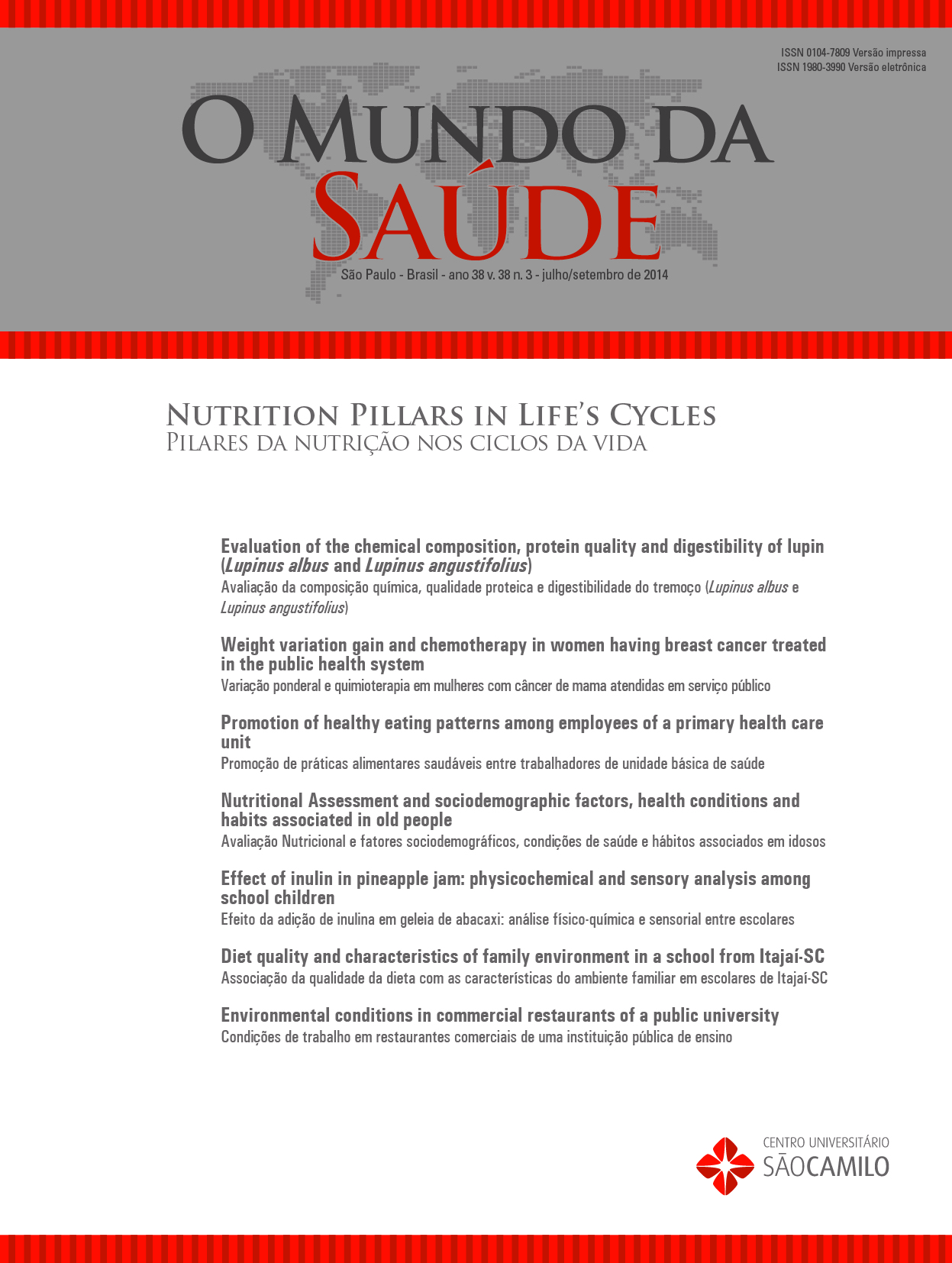Diet quality and characteristics of family environment in a school from Itajaí-SC
DOI:
https://doi.org/10.15343/0104-7809.20143803296305Keywords:
Child, Vulnerable Populations, Family, Food Habits, Nutritional StatusAbstract
Food behavior in childhood is influenced by parent’s food behavior, and children inclusion in the school environment. This study
aimed to verify the association between diet quality and characteristics of children’s family environment in schoolchildren of the
1st to 5th grade from municipal schools from Itajaí-SC. Socioeconomic and family environment behaviors were registered by
means of a structured questionnaire. Diet quality was estimated by the Index of Schoolchildren Diet. Four hundred seventeen
children participated in the study (95.0%), with a mean age of 8.8 years, being 55.2% eutrophic and 75.1% having an adequate
waist circumference. Foods more consumed were: meat or poultry, dairy products and beans; fish, instant noodles, hamburgers
or hot dogs and fried snacks presented low consumption. The median score of diet quality was 4, and ranged from -6 to
13 points, 57.1% of children had scores no greater than the median ones. Better diet quality was associated to higher mother
schooling; male gender; overweight and no habit of having meals while watching television. Children of parents having higher
scores in diet and physical activity presented a better diet quality as compared to those with lower scores (p < 0.001) (61.1%
and 25.9%, respectively). The worst diet quality of children was associated to family environment, strengthening the need of
nutritional interventions involving the families for promoting effective changes in food habits.






























